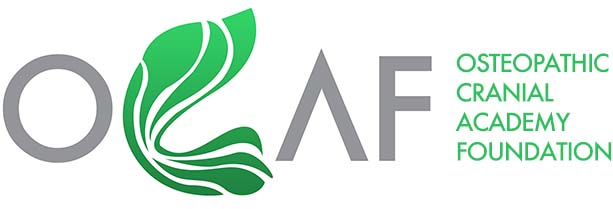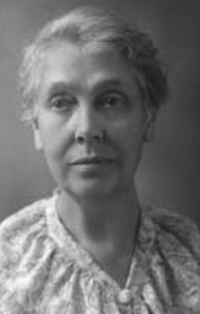MAKING THE WORLD A HEALTHIER PLACE WITH F.O.R.C.E.
(Fund for Osteopathic Research and Continuous Education)
Modern medicine has advanced rapidly in our lifetime, saving lives and increasing the quality of life for generations to come. Many of these advances result from scientific research into Osteopathic Manipulative Medicine done by the future generations of Doctors of Osteopathy.
Innovative thinking and scientific research are essential for further breakthroughs in Osteopathic Manipulative Medicine. This research advances the quality of patient treatment and opportunities for future innovation and breakthroughs.
But research requires funding from many sources, including government agencies, groups dedicated to improving modern healthcare, foundations, and individuals. With these resources, we can advance treatment options and the effectiveness of Osteopathic Manipulative Medicine.
THE OCAF ROLE IN EXPANDING RESEARCH
Since its inception, the Osteopathic Cranial Academy Foundation (OCAF) has supported research for Cranial Osteopathy, now referred to as Osteopathic Cranial Manipulative Medicine (OCMM). As part of this effort, OCAF has expanded its research efforts to include the Fund for Osteopathic Research and Continuous Education (FORCE), which funds scientific inquiry into Osteopathic Manipulative Medicine.
THE FORCE VISION AND MISSION
Vision: To improve healthcare through scientific inquiry and the application of the osteopathic philosophy and Osteopathic Manipulative Medicine (OMM).
Mission: To advance clinical research in the practice of Osteopathic Manipulative Medicine and provide OMM research education.
HOW YOU CAN HELP
OCAF’s Fund for Osteopathic Research and Continuous Education seeks your support to ensure the legacy of the Osteopathic treatment approach.
To donate to this vital mission:
Louisa Burns
PAST PROGRAMS FUNDED BY FORCE
FORCE sponsors a Research Poster Competition for osteopathic student and resident research through the Louisa Burns Osteopathic Research Committee (LBORC) and the National of Undergraduate Fellows Association (NUFA) of the American Academy of Osteopathy and the Department of Research and Development of the American Osteopathic Association. Entries have covered clinical research, education and public health issues, and case studies.
EMPATHY in the Patient-Physician Relationship:
This landmark Empathy study showed the relationship between physician empathy and the clinical markers of diabetic patients. Findings show the higher the empathy score of the physician, the more patients they had within normal clinical markers.
A second study compared the number of admissions into the hospital of diabetic patients as a result of complications in the management of their disease and the empathy score of their physician. The findings revealed the higher the empathy score of the physician, the fewer the hospital admissions of their patients.
2025 First Place Winners of the LBORC-NUFA Poster Presentations:
Case Study:
- Students:
Hand & Helmet: A Crown-to-Coccyx Approach For Positional Plagiocephaly: Anthony Enniss, OMS IV; Katharyn Neuer, DO; Zachary L. Whitaker, DO; and Eren Ural, DO
Midwestern University Chicago College of Osteopathic Medicine (MWU/CCOM) - Residents:
Optimization of Abdominal Surgery and Controlling Intractable Neuropathic Pain with Perioperative OMT: Ceferino Cruz, DO; Eren Ural, DO; Gary C. Gailius, DO; and Katharyn Neuer, DO
Midwestern University Arizona College of Osteopathic Medicine ONMM-3 Residency
Education and Public Health:
- Students:
The Impact of Simulated Osteopathic Manipulative Medicine Hospital Rounds on Student Confidence and the Likelihood of OMT Use During Clinical Clerkships: Tatiana Abdulnour, OMS IV; Jan Pryor, DO, MPH; and Lisa R. Chun, DO, MS, FNAOME
California Health Sciences University College of Osteopathic Medicine (CHSU-COM)
Original Research:
- Students:
A Novel Calibration Methodology for Osteopathic Manipulative Medicine Research: Improving Study Validity by Standardizing Intra-researcher Techniques: Daniel Hahn, OMS-III; Michael Krakowski, OMS II; Saranda Kadriovski, OMS II; Michael Pierides, OMS II; Lauren Velasquez, OMS III; and Mikhail Volokitin, MD, DO
Touro College of Osteopathic Medicine (TouroCOM-Harlem) - Residents:
Osteopathic Treatment Decreases Pain and Opioid Use in Children with Acute Sickle Cell Disease Pain: Amber M. Brown, DO, MS; Derrick L. Goubeaux, DO; and Jennifer A. Belsky, DO, MS
Riley Hospital for Children, Indiana University School of Medicine, Marian University College of Osteopathic Medicine


